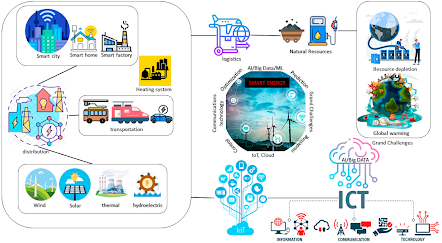Nonlinear modeling of measurement errors in gateway energy meters
🔌 Nonlinear Modeling of Measurement Errors in Gateway Energy Meters: Why It Matters in Smart Grids?
In the age of smart grids and intelligent energy management, gateway energy meters play a crucial role in collecting, aggregating, and transmitting consumption data from homes, industries, and commercial spaces. However, despite their importance, measurement errors in these devices can severely impact decision-making, billing accuracy, and system reliability.
But here's the twist—these errors are rarely linear.
⚠️ Why Traditional (Linear) Models Fall Short?
Conventional error models assume a direct, often linear, relationship between input variables (voltage, current, temperature) and output errors. While this might be adequate for rough estimations, it grossly oversimplifies what actually happens in real-world environments where:
-
Load profiles fluctuate rapidly,
-
Harmonics distort signal quality,
-
Environmental factors like heat or EMI interfere with readings.
📈 Enter Nonlinear Modeling:
Nonlinear modeling dives deeper into the complex, often hidden patterns behind measurement errors. These models use techniques such as:
-
Polynomial regression
-
Neural networks
-
Support vector machines
-
System identification tools (e.g., NARMAX models)
With these, we can map out how different conditions interact and dynamically distort energy readings—offering a truer, more reliable representation of meter performance under stress.
🔍 Real-World Application:
In practice, nonlinear error models allow us to:
-
Correct data in real time, even before it reaches the central server
-
Detect hardware degradation or signal noise proactively
-
Adapt calibration settings dynamically using feedback from live conditions
-
Reduce false alarms or under-/over-billing by improving data integrity
This is especially relevant for gateway meters, which are often the first line of communication between local devices and cloud platforms. A minor measurement error at this level can cascade through a smart grid’s entire ecosystem.
🧠 Integrating AI & Machine Learning:
Today, researchers are leveraging AI and ML to automate nonlinear error modeling. For instance, a neural network can be trained on historical meter data to learn error patterns and correct them on the fly. This is revolutionizing how utility companies and researchers think about data validity in smart metering systems.
🌍 The Big Picture:
As we transition toward net-zero buildings, distributed energy resources (DERs), and real-time energy markets, the accuracy of our metering infrastructure becomes non-negotiable. Nonlinear modeling of errors isn’t just a technical exercise—it’s a foundational step toward building a smarter, greener, and more trustworthy energy future.
Description:
Nonlinear modeling of measurement errors in gateway energy meters involves the use of advanced mathematical and computational techniques to accurately characterize and predict deviations in energy measurements caused by non-ideal conditions such as load fluctuations, harmonic distortions, temperature variations, and electromagnetic interference. Unlike linear models that assume a direct proportionality, nonlinear models capture complex relationships, improving the reliability and precision of smart grid data used for billing, monitoring, and energy optimization.
Global Network & Technology Excellence Awards
See more Info : network.sciencefather.com
Nomination: https://lnkd.in/g_zsr5Cz
Social Media :
Instagram : https://lnkd.in/gqHM_pth
Pinterest : https://lnkd.in/gBnzjCUt
Youtube : https://lnkd.in/g2n_3X4e
Facebook : https://lnkd.in/gN7ybZuE
ScienceFather Researcher ResearchScientist #Speaker#AI
#Networking#NetworkAwards#ResearchAwards#SmartGrid #EnergyMetering #NonlinearModeling #SmartEnergy #IoT #PowerSystems #MeterAccuracy #DataAnalytics #MachineLearning #GridTechnology #EnergyInnovation #ElectricalEngineering

.png)


No comments:
Post a Comment